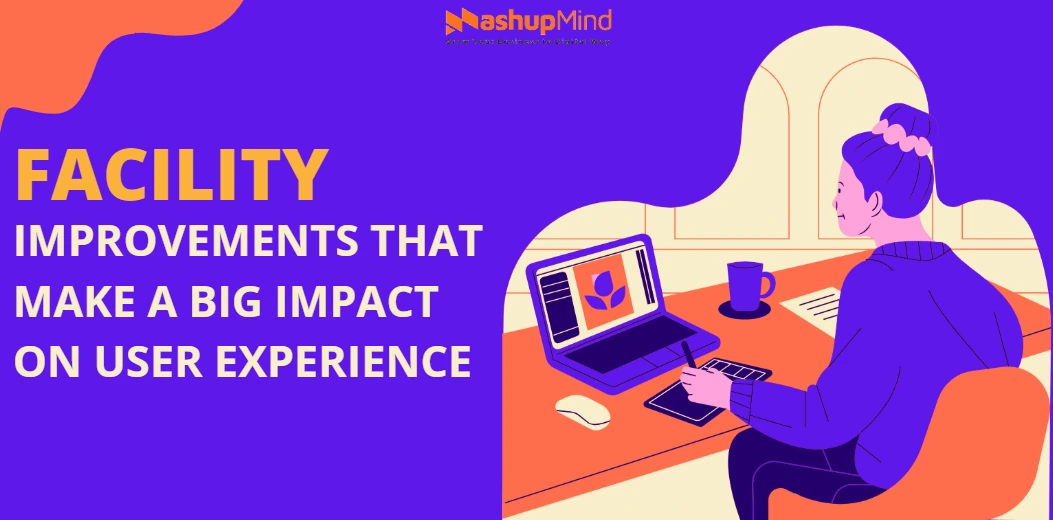The physical environment in which customers and employees interact plays a crucial role in shaping their experiences and perceptions. Whether it’s a commercial office, a retail space, or a public facility, the design, layout, and functionality of the space have a significant impact on how users feel. Facility improvements, when done correctly, not only enhance the aesthetic appeal of a space but also improve productivity, customer satisfaction, and overall well-being. However, achieving these improvements while staying within budget requires careful planning and prioritization. In this article, we’ll explore key facility improvements that can make a big impact on user experience and provide tips on staying on budget.
Why User Experience is Key to Facility Success
User experience (UX) is an important factor in how individuals interact with a facility. Whether it’s a customer in a retail store, an employee in an office, or a visitor to a public facility, how they feel in a space influences their behavior and overall satisfaction. A positive user experience can lead to increased loyalty, better productivity, and even more business. For companies, improving user experience isn’t just about making the space more attractive; it’s about creating a functional, comfortable, and efficient environment that meets the needs of those who use it.
When users feel comfortable and appreciated in a facility, they are more likely to return, recommend the space to others, or engage in productive activities. Facilities that are thoughtfully designed with user needs in mind can significantly enhance the overall experience, whether it’s a place of business, leisure, or service. Facility managers and business owners need to consider the user’s journey from the moment they enter the space.
Read : 5 Ways Airports Are Streamlining the Travel Experience
Upgrading Restrooms: An Overlooked Yet Crucial Area
One of the most important yet often overlooked spaces in any facility is the restroom. Restrooms are high-traffic areas and play a significant role in shaping a user’s overall experience. A clean, functional, and comfortable restroom makes a big difference in how customers and employees feel about a facility. Upgrading restrooms can drastically improve the user experience and create a more positive impression of the space.
A key improvement is installing modern bathroom partitions. These partitions enhance privacy, provide better organization of the space, and improve the overall aesthetic. Privacy is a significant factor for restroom users, and poorly designed or outdated partitions can make users uncomfortable. There are several considerations when upgrading your facilities, such as the bathroom partition cost, the price of lighting fixtures, new sinks, and more. Balancing cost and quality is crucial to achieving a functional and visually appealing restroom. Touchless fixtures, such as faucets, soap dispensers, and automatic doors, can also enhance convenience and hygiene, creating a more user-friendly environment. These simple upgrades help reduce maintenance costs and improve the overall restroom experience for everyone.
The Power of Office Layout: Creating Collaborative and Productive Spaces
The design and layout of an office space directly impact employee productivity and morale. A well-thought-out office layout can encourage collaboration, creativity, and focused work. Open-plan offices with communal areas foster communication and teamwork, while quiet zones provide spaces for employees to concentrate without distractions.
However, it’s important to find the right balance between collaborative spaces and private areas. Too much openness can lead to distractions, while too many isolated spaces can reduce the flow of ideas. A flexible layout that adapts to the needs of the employees can foster a more dynamic work environment. Including ergonomic furniture like adjustable desks and comfortable chairs is essential to promote physical well-being and reduce strain, which, in turn, boosts productivity.
Creating an office layout that supports both teamwork and focused work enhances user experience by improving comfort and promoting efficiency. By investing in functional and aesthetically pleasing design, companies can boost employee satisfaction and retention.
Accessibility: Designing for All Users
Inclusivity is paramount in today’s world. Accessibility improvements, such as designing spaces to meet ADA (Americans with Disabilities Act) standards, significantly enhance the user experience. By prioritizing inclusivity, we create environments where individuals of all physical abilities feel comfortable and welcome.
Basic accessibility upgrades include installing ramps, wider doorways, and ADA-compliant restrooms. Simple changes like these can greatly improve how people interact with a facility. Beyond physical accessibility, designing with universal principles ensures that the space is functional for everyone. For example, creating clear signage, providing seating options for various needs, and ensuring that pathways are wide enough for mobility devices can make a facility more inclusive and user-friendly.
Designing for accessibility not only helps businesses meet legal requirements but also demonstrates a commitment to diversity and inclusion, which improves the user experience for everyone.
Find : Top 10 B2B Digital Marketing Strategies for 2025
Staying on Budget: Cost-Effective Facility Improvements
While it’s important to make improvements that positively impact user experience, staying on budget is a critical concern for most businesses. Facility upgrades can become expensive, and careful planning is necessary to ensure that the improvements are both cost-effective and impactful.
There are several ways to stay on budget while still making meaningful improvements. Prioritize upgrades that will have the most significant impact on user experience. For instance, investing in restroom upgrades like modern partitions can make a noticeable difference in customer satisfaction without breaking the bank. Similarly, ergonomic furniture or lighting improvements can improve employee comfort and productivity at a reasonable cost.
Sustainability: Green Improvements for Better User Experience
Sustainability has become an essential consideration in facility management, as it has a direct impact on both the environment and user experience. Green improvements, such as energy-efficient HVAC systems, water-saving fixtures, and eco-friendly building materials, not only reduce environmental impact but also enhance the comfort and well-being of those using the facility.
Sustainable design also improves air quality, regulates indoor temperatures more effectively, and provides a healthier environment for occupants. Furthermore, many green upgrades can help reduce operational costs in the long run, contributing to a facility’s bottom line. For instance, LED lighting, water-saving faucets, and improved insulation all reduce energy and water usage, which can lead to substantial savings over time. It’s also essential to think about the overall building structure. For example, building roof entry points can play a critical role in the overall design of a facility, especially for maintenance and energy efficiency.
Incorporating sustainable features into your facility not only supports environmental responsibility but also enhances the user experience by providing a healthier, more comfortable space.
Conclusion
Facility improvements have a profound impact on user experience, whether you’re enhancing employee productivity or ensuring customer satisfaction. By upgrading restrooms, optimizing office layouts, improving accessibility, and investing in sustainable practices, you can create spaces that are functional, welcoming, and user-friendly.
However, it’s essential to strike a balance between making meaningful improvements and staying within budget. By prioritizing high-impact upgrades like bathroom partitions and researching cost-effective options, businesses can enhance user experience without exceeding their financial limits. Thoughtful investments in facility improvements will contribute to a better environment for everyone and lead to long-term success.







